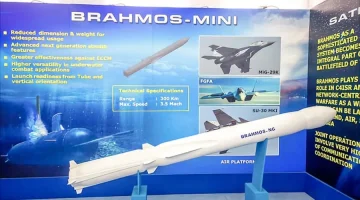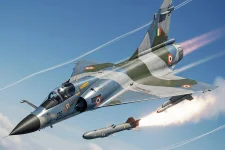- Views: 1K
- Replies: 11
The BrahMos-NG, the lighter and more advanced successor to the formidable BrahMos supersonic cruise missile, is being developed with the potential for a groundbreaking air-to-air role, aimed at neutralising critical enemy assets from the sky.
According to Sudhir Mishra, the former head of BrahMos Aerospace, this next-generation weapon is being envisioned to target and destroy high-value aerial platforms such as Airborne Warning and Control Systems (AWACS), mid-air refuelling tankers, and large transport aircraft.
The BrahMos-NG (Next Generation) is a joint venture between India's DRDO and Russia's NPO Mashinostroyeniya. It is primarily being designed as a potent air-to-surface and air-to-sea missile.
Weighing approximately 1.3 tonnes—less than half the weight of its predecessor—the NG variant is compact enough to be integrated into a wider range of the Indian Air Force (IAF) fleet, including the Su-30MKI, Tejas, and MiG-29 fighters.
While not intended for dogfights with agile enemy fighters, the missile’s adaptation for an air-to-air mission would fill a crucial strategic gap.
Large, relatively slow-moving aircraft like AWACS are the "eyes in the sky" for an adversary, providing vital battlefield surveillance and command and control. Similarly, tanker aircraft are essential for extending the range and endurance of fighter jets, while transport planes form the backbone of military logistics.
By targeting these enablers, the BrahMos-NG could effectively disrupt an enemy's entire air campaign and logistical supply chain.
The strategic importance of this capability cannot be overstated. In modern warfare, neutralising an AWACS can blind an opponent's air force, making their fighter jets vulnerable.
Destroying aerial refuellers can prevent enemy aircraft from reaching their targets or force them to withdraw prematurely. This potential application of the BrahMos-NG would provide the IAF with an unparalleled standoff capability to dismantle an enemy's operational capacity from a safe distance.
Powered by a ramjet engine, the BrahMos-NG is projected to travel at speeds exceeding Mach 2.8 (over 3,400 kmph) with a range of approximately 290 kilometres.
Its high speed makes interception extremely difficult for current air defence systems.
The missile's reduced size allows a single fighter jet, such as the Su-30MKI, to potentially carry multiple missiles, significantly increasing its firepower and mission flexibility compared to carrying a single original BrahMos missile.
This development highlights a forward-thinking approach by BrahMos Aerospace to create a versatile, multi-role weapon system.
As the BrahMos-NG continues its development, with flight testing anticipated to be nearing, its potential evolution into a specialised hunter of high-value aerial targets promises to add a significant new dimension to India's military capabilities and bolster its strategic defence posture in the region.


